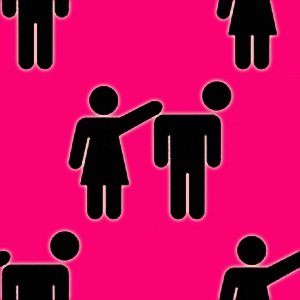
Two weeks ago in this column we stirred some conversation in Revelstoke about violence against women. Many of those conversations were still behind closed doors however as it seemed people were still afraid to speak about it out loud. Throughout these conversations one topic kept being asked about, “what about men?” It seems that although fear of speaking about violence against women is still very prevalent, something even more in shadow is violence against men.
Do a quick Google search for ‘Revelstoke Men’s Shelter’ and the first hit will actually be for the Revelstoke Humane Society on Petfinder.com. Once you get past the low brow well-men-are-dogs-after-all humour, you will see mention on the Revelstoke Times Review about a Revelstoke Men’s Shelter. Closer inspection reveals however this is only a link through the Black Press Network and by default the Revelstoke Times Review, about news in Cranbrook and Kamloops. Both communities as of spring 2011 were moving forward with developing men’s shelters with funding from the United Way, the Canadian Mental Health Association and/or BC Housing.
Curious about what was going on in Revelstoke and what sort of resources currently exist for men suffering from violence, I asked a City official who knows a great deal about the social fabric of our community. It was made clear this was a subject they did not wish to speak about, nor did it seem they thought it was a problem. They were more interested in how often it occurs than whether or not we should be doing anything about it. It was disheartening to hear. If there is a problem in society shouldn’t we all work to fix it and help? What is more important? How big the problem is, or that there is a problem in the first place?
According to the Australian organization 1IN3, at least one in three victims of sexual assault and family violence is male (http://www.oneinthree.com.au/). Information on the website is very well researched and details many aspects of the issue. Males are taught by role conditioning not to admit fear, making it appear that women are more fearful of violence simply because they report fear more freely than men. Women and men have different perceptions of danger. Women may over-react to objective threat, while men probably under-react. In a recent Canadian study, victimization by repeated, severe, fear-inducing, instrumental violence (often called intimate terrorism) was reported by 2.6% of men and 4.2% of women in the last five years (Dutton, D. G. [2010]. The Gender Paradigm and the Architecture of Antiscience. Partner Abuse, 1(1), 5-25). The problem is further quantified in a report from 1993 indicating that “The rate of minor assaults by wives was 78 per 1,000 couples, and the rate of minor assaults by husbands was 72 per 1,000. The severe assault rate was 46 per 1,000 couples for assaults by wives and 50 per 1,000 for assaults by husbands. Neither difference is statistically significant.” (Straus, M. A. [1993]. Physical assaults by wives: A major social problem) Based on the research, it is clear that violence against women and violence against men is an equal problem.
Just as violence against women is deeply ingrained in our culture, so to is violence against men. Surely many can remember the clothing line and subsequent book Boys are Stupid, throw rocks at them (http://en.wikipedia.org/wiki/Boys_are_stupid,_throw_rocks_at_them!_controversy). It is a clear example of misandry, which is defined by Wikipedia as “as the hatred or dislike of men or boys. Though the concept is ancient, the word did not appear in most dictionaries until the second half of the 20th century” or encouraging violent and emotional abuse of young men. This perpetuates existing gender biases and promotes further inequality under the guise of humour. I showed an image from this book to a friend of mine and she laughed. As the wiki link asks, would it be as funny and acceptable if the book was called “Homosexuals are stupid, throw rocks at them?”
Traditional gender roles have created inequality for men’s health. For example, I have heard some women state a dislike for Movember because it detracts from breast cancer awareness, or that growing a mustache is stupid. Is it any more “stupid” than dressing all in pink? It is well past time to move beyond these archaic concepts of gender bias and accept that we are all in this together. Stop Abuse For Everyone (SAFE) (http://www.safe4all.org/) is an Oregon organization providing services to those who typically fall through the cracks of domestic violence services such as “straight men, GLBT victims, teens and the elderly”. Unfortunately, resources such as this do not yet exist or are extremely hard to find in Canada. As I was told when asking the aforementioned City official, a man’s options in Revelstoke are to call 911, or do nothing.

It is an interesting catch-22. By focusing attention on one side of the violence issue that socially we have inadvertently created inequality in the system. That is not to say we should sit idly by and do nothing. However, when one actively seeks to “create equality” by elevating one group over another, all that serves to do is create further inequality, and in this case, continue to perpetuate gender bias.
Both these stories only scratch the surface of the issue and I encourage everyone to educate themselves on the different forms of abuse and how both men and women can perpetrate them.
For more information about violence against men providing a concise look at the issue and its definitions from the Public Health Agency of Canada visit:
http://www.phac-aspc.gc.ca/ncfv-cnivf/publications/mlintima-eng.php




